A common perception is that in order to brew a perfect cup every time, all you need to observe are the following ‘parameters’:
i) Infusion time
ii) Water Temperature
iii) Quantity of Tea Leaves
While those are the most important determinants, there are not the only factors.
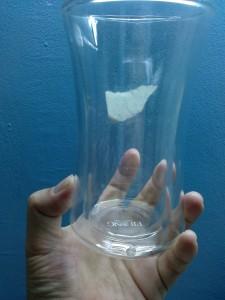
For 3 different sets of experiments, we maintained the infusion time, water temperature and quantity of tea leaves for the same batch of Shuixian while varying another factor.
Shown are the photographs of the infusions, as mentioned before, while liquor color doesn’t indicate strength or intensity of different teas, for the same teas it is telling.
Heat Retention- Material of Vessel
Heat dissolves substances in the tea leaves that release the flavors, colors and aromas.
However, since the heat is applied over a sustained period of time as opposed to a singular point in time, it stands to reason the temperature of the water throughout the entire steeping period is important, not just at the point it was poured in.
In other words, heat retention of the brewing vessel is crucial.
To test that hypothesis, we used a Yixing pot (about 200 cc) and a drinking glass. Though the glass is smaller than the Yixing, we marked the water levels when poured out from the Yixing pot to keep water levels constant.
We infused 5g of Shuixian for 1 minute at 100°C.
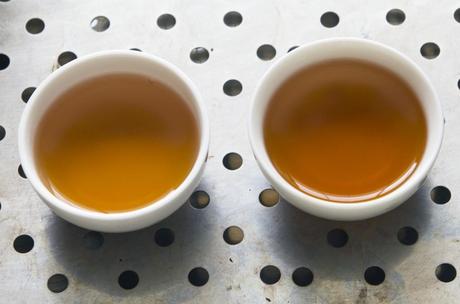
As you can see, the liquor is lighter than that brewed with the Yixing pot.
Wholeness of Leaves- Surface Area of Tea Leaves
In order for the flavor giving components to be dissolved, it is a reasonable assumption that it has to be in contact with the water. Hence the surface area of tea leaves would affect how much is dissolved.
To test that hypothesis, we fixed the brewing vessel- 2 x 150ml taster mugs- and all other variables. What we did was to crush 3g of Shuixian to increase the surface area in contact.
Then we infused the 2 set of leaves for 1 minute with boiling water.
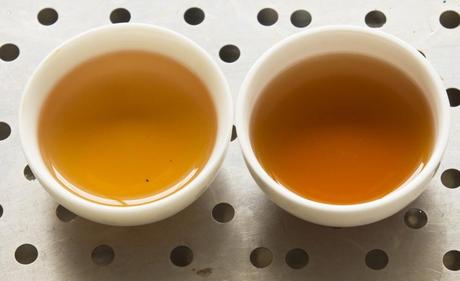
For this same reason, CTC leaves can be brewed faster.
Space- Expansion of Tea Leaves
It has always been said the tea leaves need space to expand. In putting this theory to the test, we used one of the most diabolical inventions in the tea world- after the tea bag of course- a tea ball.
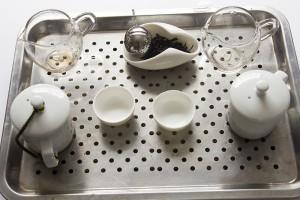
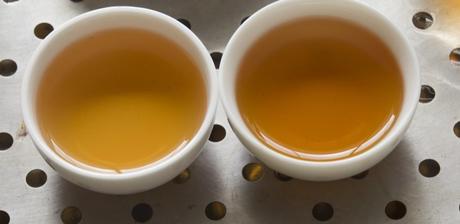
The picture on the left shows the liquor after being infused with a tea ball in the taster mug.
Again the cup on the right is darker and indicates that more substances are dissolved.
Notes
It must be said that liquor color is by no means indicative of the taste.
For example, in the second experiment, the tea that was brewed with crushed leaves and with darker liquor tastes more bitter and astringent while in the first experiment the tea brewed with the Yixing pot is sweeter though it has the darker liquor.
However describing taste and aroma can’t be discerned through pictures and we merely used the visual difference to illustrate that keeping the main parameters constant, it is possible to have a disparate effect.
There are other variables that come into play such as brewing techniques, water quality that may not have a visual difference. Despite that you can experiment at home and discover the disparity in tastes yourself. It could be something as minor as how water is poured on the tea leaves.
Hence don’t be so quick to stick to your ‘golden rules’ or assume that scales and timers get you the best results. Rely on your senses and experiment- not all teas are created equal, it should not come as a surprise that they are brewed differently.
